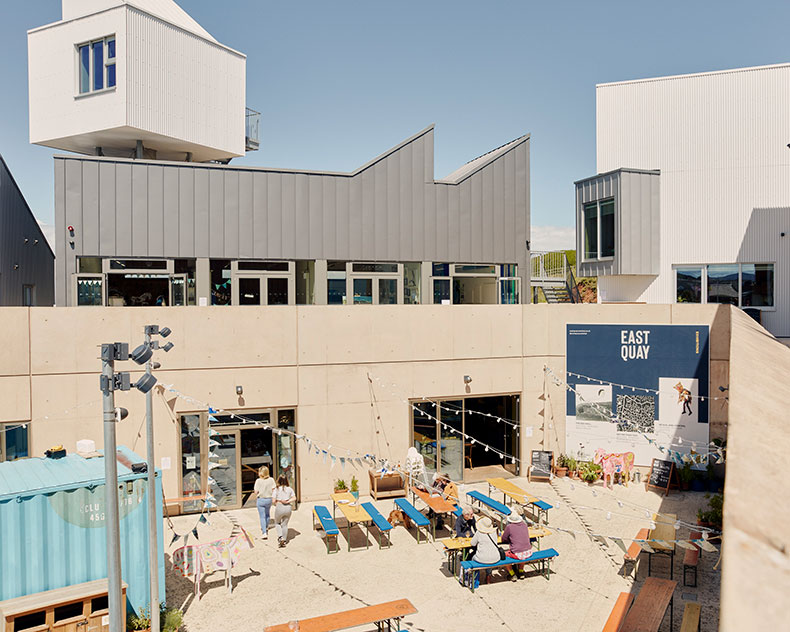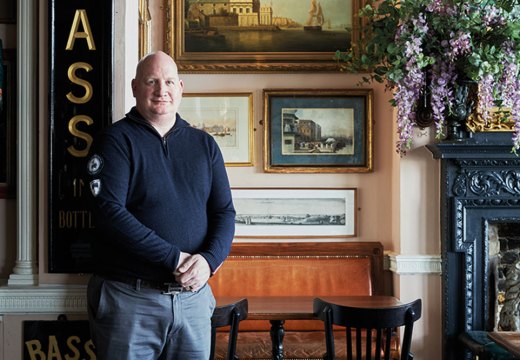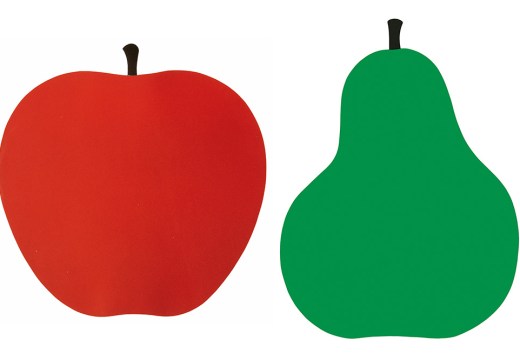Watchet isn’t a well-known place – my spellcheck keeps telling me I mean ‘Ratchet’. It’s on the West Somerset coast between Minehead, famous for its Butlin’s, and Hinkley Point, famous for its nuclear power stations. I grew up a bit further along the Somerset coast, but I was never taken there for weekend trips. As a child, if it didn’t have a beach with donkey rides or an amusement arcade I wasn’t interested. The town’s too far from a main road to be a centre for businesses and its main employer, a paper mill, closed down in 2015; since then it’s struggled. In 2017 the Social Mobility Index gave its lowest ranking to Watchet. It was all set up to become a slightly run down seaside retirement town with plenty of pubs for lunch and a quayside around the harbour for a slow post-lunch walk, but not much else.
On the Saturday lunchtime I visited Watchet, though, children were being led on a charge along the quayside on hobby horses. A little later they dragged a wooden boat on its trolley back past the quayside pubs and to the East Quay, the community arts centre from which they had set. One of East Quay’s founders, Georgie Grant, was leading the charge. The event was in remembrance of one of Watchet’s claims to fame, which Grant had told me about earlier: it is (possibly) the only place that a boat has been captured by men on horses. It happened during the Civil War, when a Royalist boat was caught in the mud and charged by Parliamentary cavalry from Watchet.

The patio at East Quay galley, with outdoor seating and a children’s classroom. Photo: Joseph Horton
East Quay, where the children were returning their captured boat, is a recent addition to Watchet, having been completed in 2021. It is a stack of utilitarian, blocky buildings which sits at the end of the quayside by Watchet’s marina and stands out as the only concession to contemporary architecture in sight. The pile of structures, spilling out in various directions, that makes up East Quay is quite a contrast to other contemporary seaside galleries, such as the Towner in Eastbourne and Turner Contemporary in Margate, which tend to be imposing, solid structures. East Quay’s jumble of blocks is more accessible. On the way to the entrance I walked through the children’s outdoor classroom, strewn with rolls of paper and floor cushions where they had decorated their hobby horses before setting out after the boat. The restaurant also spills out on to the central patio, creating an informal space which, Grant tells me, has been repurposed for fashion shows and live music as needed.
The gallery exists thanks to the vision and ambition of its founders – Grant, Jess Prendergast, Naomi Griffith and Rachel Kelly of the Onion Collective. It took about nine years of fund-raising, community engagement and building, interrupted by the Covid-19 lockdown. Prendergast grew up in Watchet and Grant has lived there for years. They saw the town was struggling, and that many children growing up in Watchet didn’t believe they had opportunities to do much more than work in an area where there weren’t a lot of inspiring careers available. There was, however, a reasonably thriving community of artists, drawn to the area by cheaper houses and the chance to live near the water. East Quay was to be a resource to inspire the community and enliven it, helping children to believe in the possibility of a career beyond Butlin’s and the building site at Hinkley Point.
East Quay has been founded to do much more than host exhibitions. Alongside the outdoor classroom and restaurant are artists’ studios, a paper-making studio run by Two Rivers Paper and, behind, office space for local businesses. On top of the whole building sit five ‘pods’ – one-bedroom holiday apartments decorated individually by artists and designers.

Installation view of CU SOON (2023), Nye Thompson. Photo: Jesse Wild
The gallery spaces are currently showing two pieces by Nye Thompson, large-scale video installations which are more conceptual than accessible. A huge double-sided screen sits in the middle of the downstairs gallery space playing a video of Google Earth imagery of the British coast stitched together by AI – mostly views of empty sea. Upstairs, screens show static-laced images generated as satellite AI returns ‘postcards’ which Thompson has broadcast to them. There’s no countenancing the kind of art so often found in galleries in small seaside towns; instead, Grant explains, East Quay’s exhibition programme is to encourage conversation and debate. At a time when AI is almost constantly in the public consciousness, Thompson’s art should be an easy conversation-starter.
What East Quay has achieved is impressive. It feels more interesting and engaging than the usual local gallery space, which might have been built through the benevolence of a local magnate. Rather than being foisted on the local community for its own good, East Quay seems to be filling a genuine need. It’s hard to imagine it won’t have a lasting positive effect on Watchet.
‘Nye Thompson: Vertigo’ is at East Quay, Watchet, until 3 September.
Unlimited access from just $16 every 3 months
Subscribe to get unlimited and exclusive access to the top art stories, interviews and exhibition reviews.














![Masterpiece [Re]discovery 2022. Photo: Ben Fisher Photography, courtesy of Masterpiece London](http://www.apollo-magazine.com/wp-content/uploads/2022/07/MPL2022_4263.jpg)
Has the Fitzwilliam lost the hang of things?